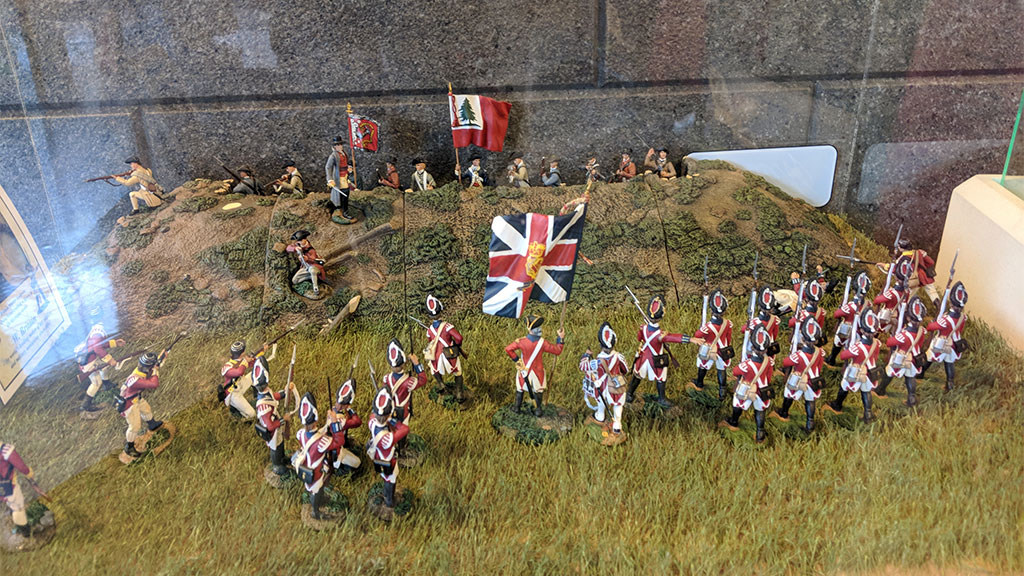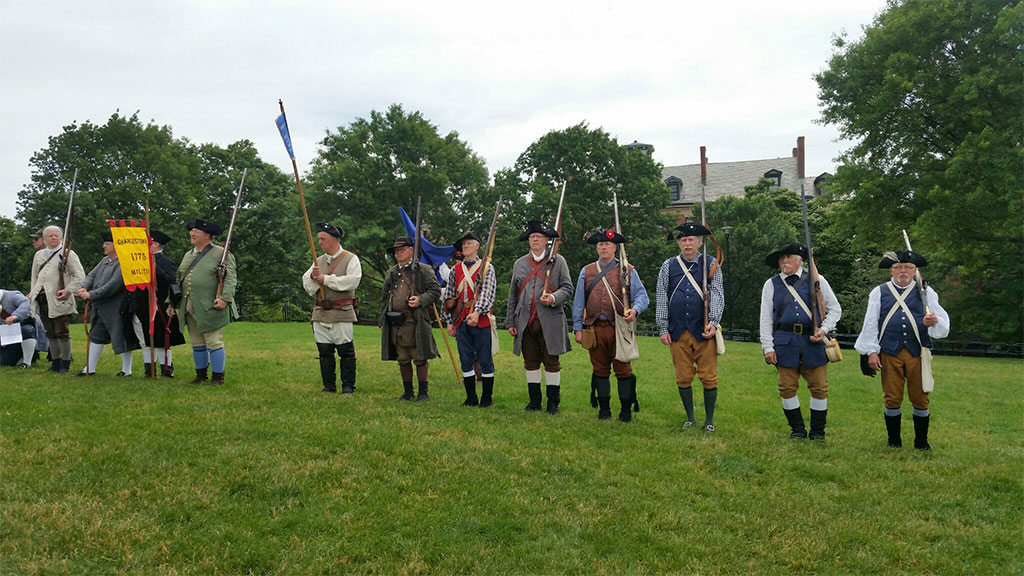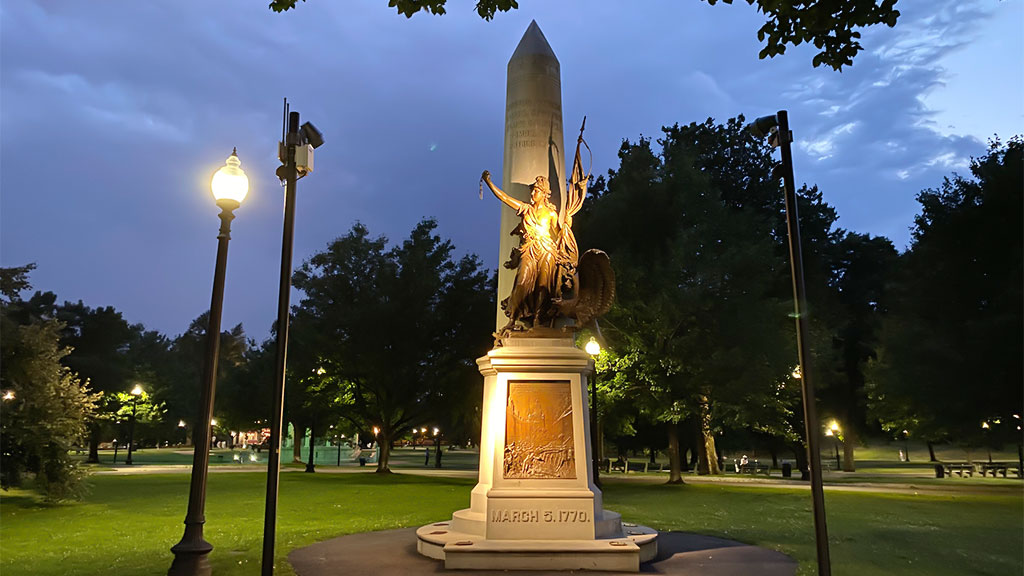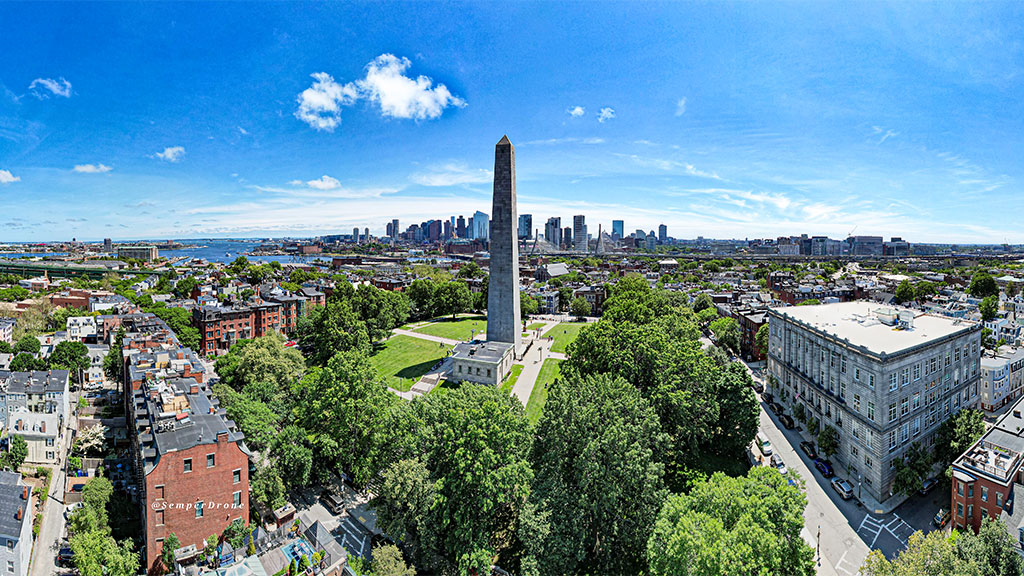Located in the heart of Boston lies a historic landmark that echoes the tales of courage and sacrifice – Bunker Hill.
This iconic site holds a significant place in American history, marking a pivotal moment in the nation’s fight for independence.
Visitors to Bunker Hill can immerse themselves in the rich past of the American Revolution, where brave soldiers made their stand against the British forces.
Exploring the grounds of Bunker Hill offers a glimpse into the valor and resilience of those who fought on this hallowed ground.
From the breathtaking views of the Boston skyline to the well-preserved monuments, every corner of Bunker Hill tells a story of bravery and determination.
Whether you’re a history enthusiast or simply curious about the roots of American freedom, Bunker Hill is a must-visit destination that encapsulates the spirit of the nation’s quest for liberty.
Prelude to the Battle

The Battle of Bunker Hill holds a significant place in American history, symbolizing the spirit of resistance and the quest for independence.
This iconic battle marked a pivotal moment in the American Revolution, showcasing the courage and determination of the colonial forces against the British.
Geography of Bunker Hill
Bunker Hill, although commonly associated with the battle, is located on Breed’s Hill in Charlestown, Massachusetts.
Despite the misnaming of the battle, this strategic location overlooks Boston Harbor, providing a tactical advantage for both the British and colonial forces.
The hilly terrain and commanding views of the surrounding area made it a crucial point of conflict during the American Revolution.
The elevated position of Bunker Hill offered a strategic vantage point for observing movements in Boston Harbor during the American Revolution. This advantage played a critical role in the dynamics of the battle and its outcome.
British and Colonial Strategies
During the battle, the British forces, under the command of General Thomas Gage, aimed to seize control of the high ground on Breed’s Hill to gain a strategic vantage point over the rebels and the city of Boston.
In contrast, the colonial forces, led by Colonel William Prescott, fortified their position atop the hill, demonstrating tactical ingenuity and resilience in the face of superior British military might.
The clash of strategies at Bunker Hill set the stage for a fierce and iconic battle that would shape the future of the American colonies.
The Day of the Battle

On the day of the Battle of Bunker Hill, tensions were high as both the British and colonial forces prepared for the imminent clash that would go down in history.
Early Movements and Fortifications
As the sun rose over the Boston Harbor on June 17, 1775, colonial forces under the command of Colonel William Prescott strategically positioned themselves on Breed’s Hill, awaiting the British assault.
They worked tirelessly through the night to fortify their position, creating simple fortifications out of earth, hay, and fence rails.
The Battle of Bunker Hill, although named after the neighboring hill, actually took place on Breed’s Hill. The colonial forces’ determination and resourcefulness in constructing defenses there played a crucial role in the outcome of the battle.
The British Assault on Breed’s Hill
In the afternoon, the British troops, led by General Thomas Gage, commenced their assault on the colonial stronghold.
As they advanced up the hill, the colonial forces waited patiently, following the directive, “Don’t fire until you see the whites of their eyes.” The British faced heavy resistance as they climbed the hill, suffering significant casualties in the process.
The Battle of Bunker Hill marked a pivotal moment in the boston bunker hill history, showcasing the strategic maneuvers and fierce determination of both the British and colonial forces. The intense fighting highlighted the resolve of the colonial troops in defending their position.
Key Moments and Turning Points
One of the key moments of the battle occurred when the British successfully gained control of the colonial fortifications after a third assault.
Despite the British eventual victory, the high casualties they suffered, including many officers, showcased the determination and resilience of the colonial forces.
The Battle of Bunker Hill became a turning point in the American Revolution, inspiring the colonial forces to continue their fight for independence with renewed fervor.
Aftermath of the Battle

The aftermath of a battle encompasses various aspects that unfold once the conflict subsides.
Here are some common elements typically associated with the aftermath of a battle:
Casualties and Immediate Consequences
The Battle of Bunker Hill resulted in significant casualties on both sides, with the British forces experiencing over 1,000 casualties, including a high number of officers.
On the colonial side, approximately 450 soldiers were killed, wounded, or captured. The severe loss of life highlighted the fierce nature of the conflict and the determination of both sides.
Significant casualties at the Battle of Bunker Hill underscored the intensity and resolve of the conflict, with British forces suffering over 1,000 casualties, notably among officers, and around 450 colonial soldiers killed, wounded, or captured.
Political and Strategic Impacts
The Battle of Bunker Hill had far-reaching political and strategic impacts on the American Revolution. It boosted the morale of the colonial forces, demonstrating that they could stand up to the powerful British army.
The battle also prompted the Continental Congress to issue the Olive Branch Petition, a final attempt at reconciliation with Britain, which ultimately failed.
Strategically, the battle revealed weaknesses in British tactics, leading to adjustments in their approach to the war.
Overall, the aftermath of the Battle of Bunker Hill fueled the colonists’ commitment to achieving independence from British rule.
Historical Interpretations and Analysis

Historical interpretations and analysis play a crucial role in shaping our understanding of the past.
Here are key aspects and methods involved in historical interpretations:
Colonial and British Perspectives
When examining the legacy of the Battle of Bunker Hill, it’s crucial to consider the differing perspectives of the colonial forces and the British troops involved.
From the colonial standpoint, the battle symbolized a pivotal moment in their struggle for independence, demonstrating their resolve and willingness to stand up against British tyranny.
On the other hand, the British viewed the battle as a costly victory that revealed the strength and determination of the colonial forces, leading them to rethink their military strategies in the conflict.
Modern Historical Views
In modern historical analysis, the Battle of Bunker Hill continues to be viewed as a significant event that encapsulates the early stages of the American Revolutionary War.
Historians emphasize the strategic importance of the battle, the high casualties on both sides, and the lasting impact it had on shaping subsequent military engagements and political decisions.
The battle is often cited as a turning point that galvanized the colonists’ resolve and challenged conventional perceptions of British military superiority, paving the way for future victories in the fight for independence.
Legacy and Commemoration
The legacy of the Battle of Bunker Hill is commemorated through various monuments and memorials that pay tribute to the historical significance of the event.
These structures serve as tangible reminders of the bravery and sacrifices made by both colonial and British forces during the battle.
Monuments and Memorials
In Boston, the Bunker Hill Monument stands tall as a symbol of the heroic stand taken by the colonial forces against the might of the British army.
Erected to honor the soldiers who fought in the battle, the monument offers visitors a chance to reflect on the courage displayed on that fateful day.
Similarly, the statue of Colonel William Prescott, the colonial commander at Bunker Hill, immortalizes his leadership and dedication to the cause of independence.
Bunker Hill Day and Reenactments
Bunker Hill Day is an annual event in Boston that commemorates the battle with parades, ceremonies, and historical reenactments.
This day serves as a reminder of the sacrifices made by the soldiers on both sides and allows the community to come together to honor their shared history.
Historical reenactments of the Battle of Bunker Hill provide an immersive experience for spectators, allowing them to witness firsthand the conditions and challenges faced by the soldiers during the historic conflict.
Frequently Asked Questions
What is the historical significance of the Battle of Bunker Hill?
The Battle of Bunker Hill was a crucial event during the American Revolution, demonstrating the determination of both British and colonial forces and boosting colonial morale.
Why is the Battle of Bunker Hill considered important?
The Battle of Bunker Hill is significant for its symbolic importance and its role in the British reevaluation of military strategies during the American Revolution.
How is the Battle of Bunker Hill commemorated?
The battle is commemorated through monuments such as the Bunker Hill Monument and the statue of Colonel William Prescott, highlighting its lasting legacy in American history.
What is the annual observance related to the Battle of Bunker Hill?
Boston celebrates Bunker Hill Day annually, reflecting on the courage and sacrifices made during the battle and emphasizing its impact on shaping American history.
Conclusion
To conclusion, the historical narrative of the Battle of Bunker Hill offers a rich tapestry of the American Revolution’s early days.
Understanding this pivotal moment involves exploring the brave actions of both British and colonial troops, the strategic significance of the battle site, and the lasting impact on the quest for independence.
Exploring the differing viewpoints of the forces on both sides sheds light on the complexities of the conflict and the stakes each side perceived.
Commemorations and monuments, like the Bunker Hill Monument and the statue of Colonel William Prescott, stand as enduring testaments to the valor displayed during this key battle.
The annual observance of Bunker Hill Day in Boston not only honors the sacrifices of those who fought but also allows the community to engage with its shared history, reminding everyone of the cost of freedom.
By revisiting the events of the Battle of Bunker Hill, individuals can gain a deeper appreciation for the sacrifices made and the resilience shown by those who fought for a new nation.
It serves as a reminder of the courage and determination that propelled the American colonies toward independence, shaping the course of history for generations to come.
Jaclyn Lowe